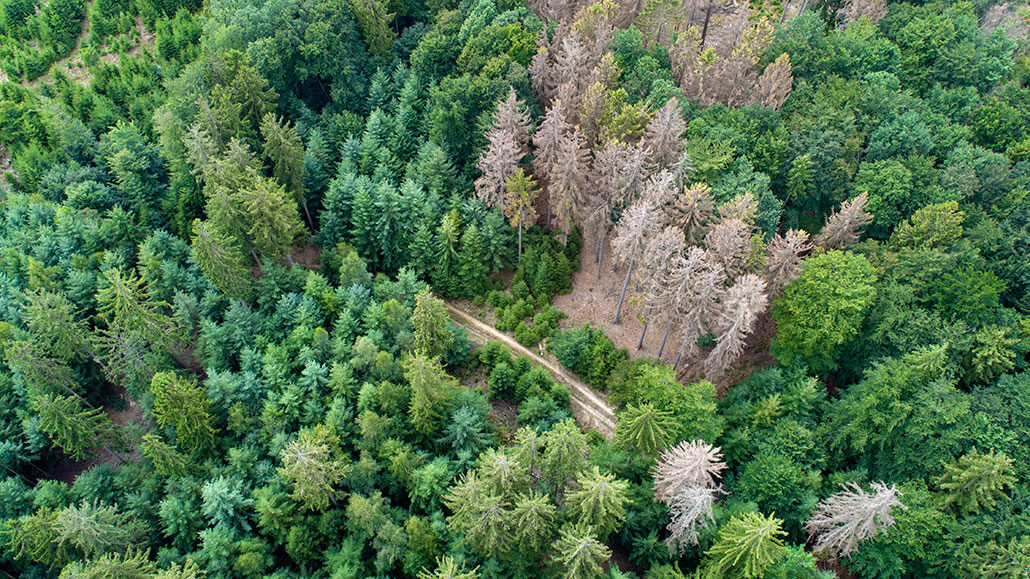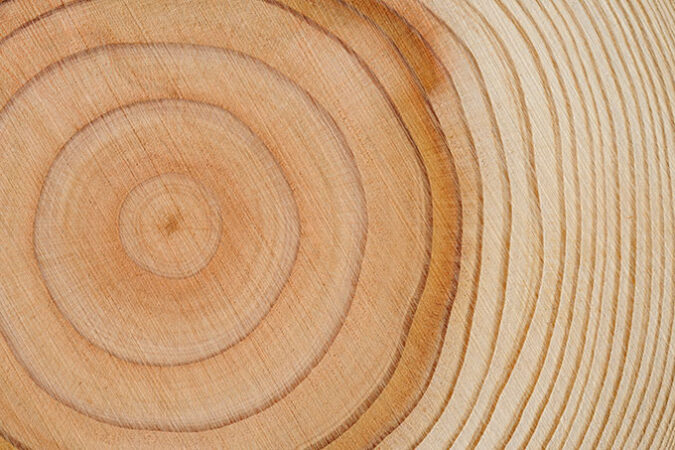The faster trees grow, the younger they die
Seen globally, this trend suggests some trees will slow climate change more than others

Fast-growing trees die younger, releasing the carbon they had stored back into the atmosphere.
ollo/E+ Collection/Getty Images Plus
As climate change spurs forest tree growth, it also shortens trees’ lives. That results in a quicker release of climate-warming carbon back into the atmosphere.
Oxygen. Clean air. Shade. Trees provide people all sorts of benefits. A major one: removing carbon dioxide from the air and storing it. That makes trees an important part of the fight against climate change. But when forest trees grow faster, they die sooner, a new study finds.
That quickens their release of carbon back into the air — which is disappointing news for global warming.
As a potent greenhouse gas — CO2 traps the sun’s heat and holds it close to Earth’s surface. Trees pull carbon dioxide, or CO2, from the air and use its carbon to build leaves, wood and other tissues. This effectively removes CO2 from the atmosphere. So trees play an important role in removing the CO2 that contributes to climate change. But they only hold onto carbon as long as they’re alive. Once they die, trees decay and release that CO2 back into the atmosphere.
This movement of carbon between forest and the atmosphere is called a carbon flux, notes Roel Brienen. He’s a forest ecologist at the University of Leeds in England. It’s a natural process that happens as trees grow and eventually die.
“These fluxes affect the amount of carbon a forest can store,” he explains. It’s not unlike the way a bank account works. Forests store carbon the way a bank account stores money. If you spend more than you make, your bank account will shrink. But he notes that it will grow if you put more money into the account than you take out. Which direction a forest’s “carbon account” goes has a huge influence on climate.
Recent studies have found that trees around the world are growing faster than ever. Rising atmospheric CO2 is probably driving that rapid growth, Brienen says. Much of that CO2 comes from burning fossil fuels. High levels of this gas are boosting temperatures, especially in colder regions. Warmer temps speed tree growth in those areas, he says. Fast growth should be good news. The faster trees grow, the faster they store carbon in their tissues, boosting their “carbon account.”
In fact, having more CO2 and living at warmer sites may explain why city trees grow faster than rural trees. But city trees don’t live as long as their country cousins. What’s more, fast-growing tree species, in general, live shorter lives than their slow-growing relatives.
Forests have been soaking up our excess CO2, Brienen says. Already they have removed one-quarter to one-third of all CO2 that people have emitted. Existing computer models assume that forests will continue to sop up CO2 at the same rate. But Brienen wasn’t sure forests would be able to keep that pace. To find out, he teamed up with researchers around the world.
Lore of the rings
The scientists wanted to see if the trade-off between growth rate and lifespan applies to all types of trees. If so, faster growth might lead to earlier deaths, even among trees that normally live long lives. To find out, the researchers combed through tree ring records.
Each season a tree grows, it adds a ring around the outer layer of its trunk. The size of the ring shows how much it grew that season. Seasons with plenty of rain make thicker rings. Dry, stressful years leave narrow rings. Looking at cores taken from trees allows scientists to track tree growth and climate.
Brienen and the team used records from forests the world over. In all, they examined rings from more than 210,000 trees. They came from 110 species and more than 70,000 different sites. These represented a wide range of habitats.

The scientists already knew that slow-growing species generally live long lives. A bristlecone pine, for example, can live for a whopping 5,000 years! A super fast-growing balsa tree, in contrast, won’t live past 40. On average, most trees live for 200 to 300 years. In almost all habitats and all sites, the team found the same link between growth and lifespan. Faster-growing tree species died younger than slow-growing species.
The group then dug deeper. They looked at individual trees within the same species. Slower-growing trees tended to live long. But some trees of the same species grew faster than the others. Those faster-growing ones died an average of 23 years earlier. So even within a species, the trade-off between growth and lifespan held strong.
The team then examined what factors might influence tree growth. These included temperature, soil type and how crowded a forest was. None was linked to early tree death. Only fast growth during the first 10 years of a tree’s life explained its having a shorter life.
Short-term benefits
The team’s big question now focuses on the future. Forests have been taking in more carbon than they have been releasing. Will that carbon flux hold up over time? To find out, they created a computer program that modeled a forest. The researchers tweaked the growth of the trees in this model.
Early on, it showed, “the forest could hold more carbon as the trees grew faster,” Brienen reports. Those forests were adding more carbon to their “bank” accounts. But after 20 years, these trees started dying. And as that happened, he notes, “The forest started to lose this extra carbon again.”
His team reported its findings September 8 in Nature Communications.
Levels of carbon in our forests could return to those from before the increases in growth, he says. That’s does not mean planting trees won’t help fight climate change. But which trees are used could have a big impact, long term, on climate.
Dilys Vela Díaz agrees. She was not involved with the study, but knows trees. She’s a forest ecologist at the Missouri Botanical Garden in St. Louis. The new findings have “huge implications for carbon [storage] projects,” she says. A forest of mostly fast-growing trees would store less carbon over the long term. It would therefore have less value for such projects, she argues. Researchers may therefore need to rethink their tree-planting efforts, she says. “We may want to look for slow growing trees that will be around much longer.”
“Any CO2 that we can take out of the atmosphere helps,” says Brienen. “We must understand, however, that the only solution to bring down CO2 levels is to stop emitting it into the atmosphere.”







